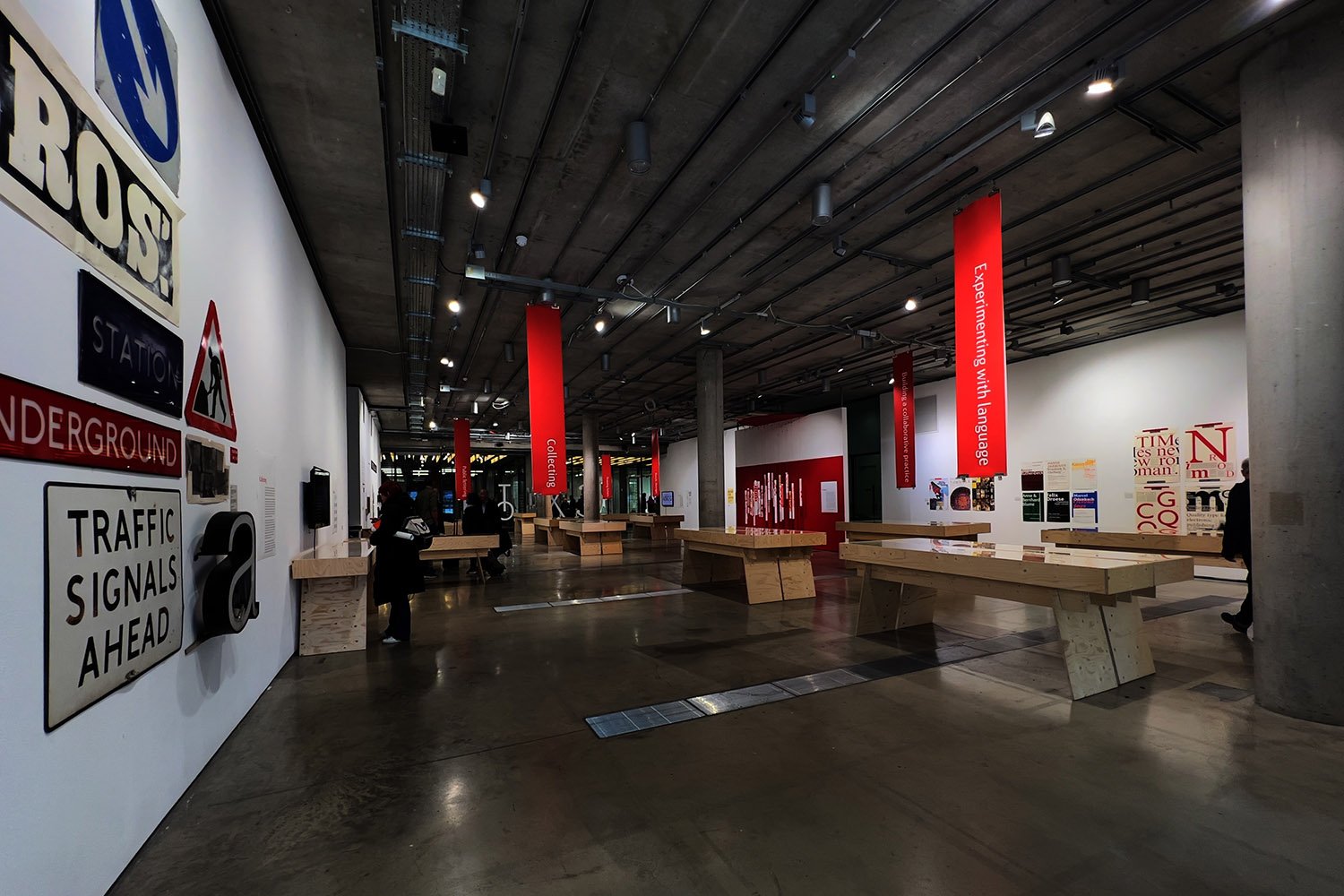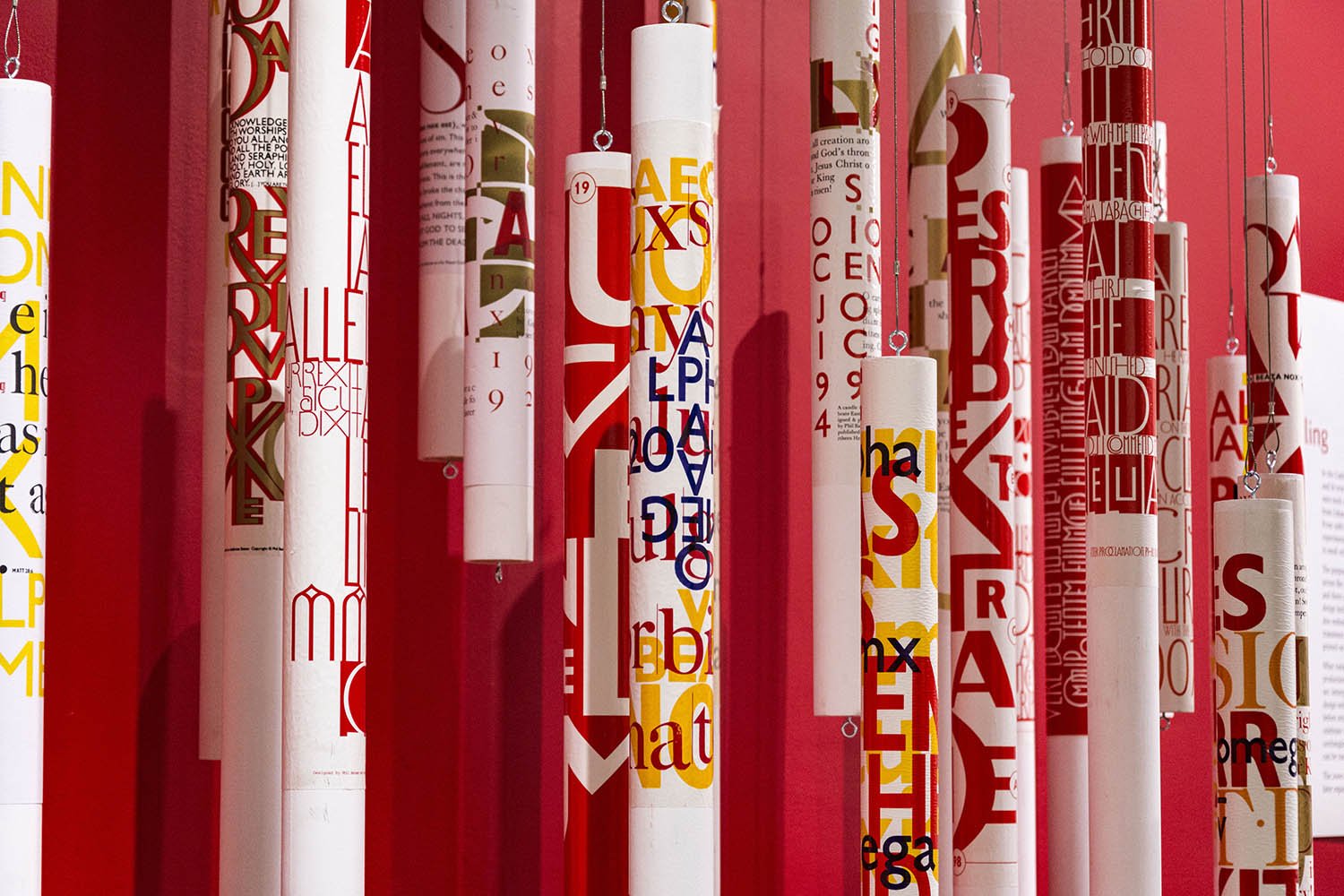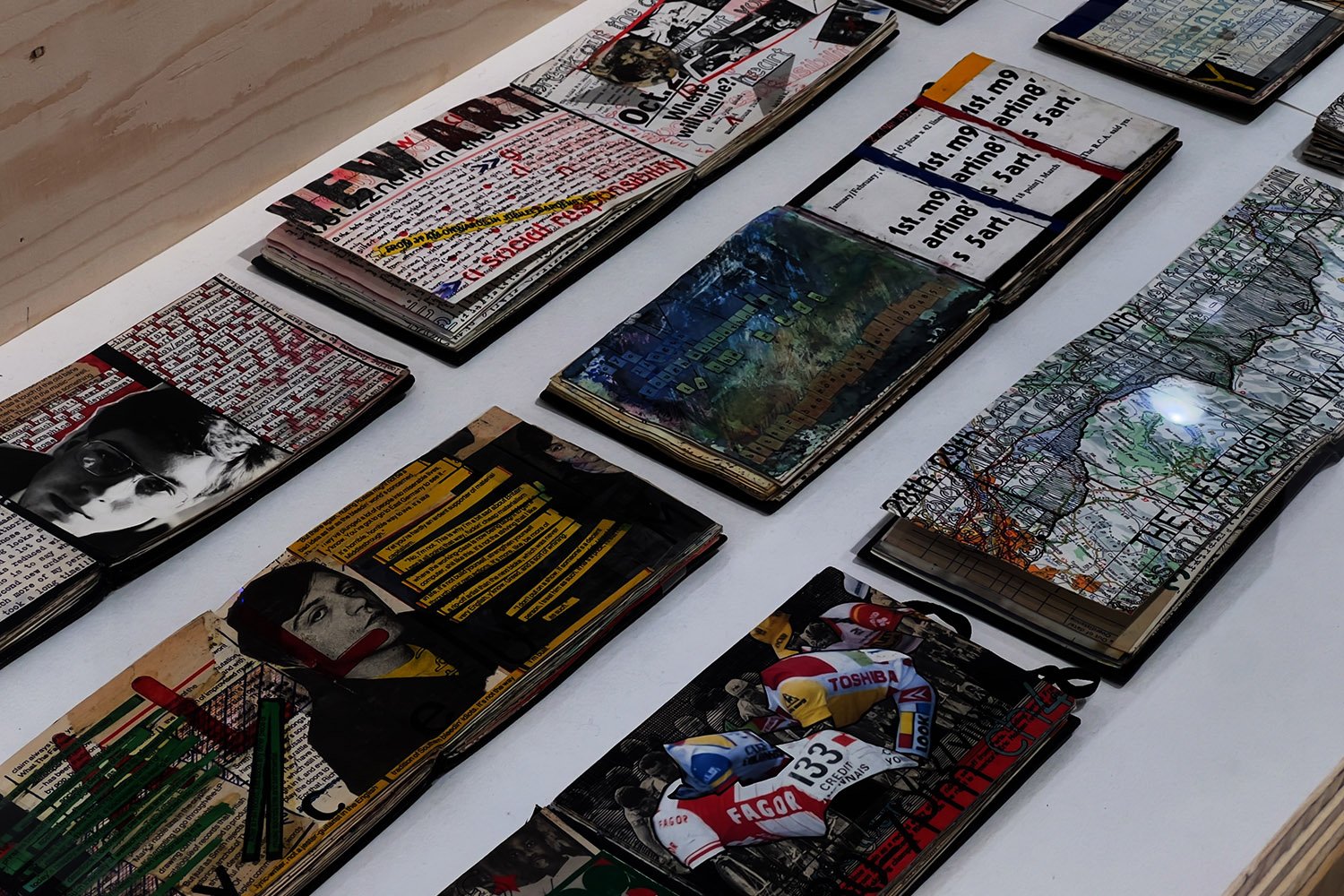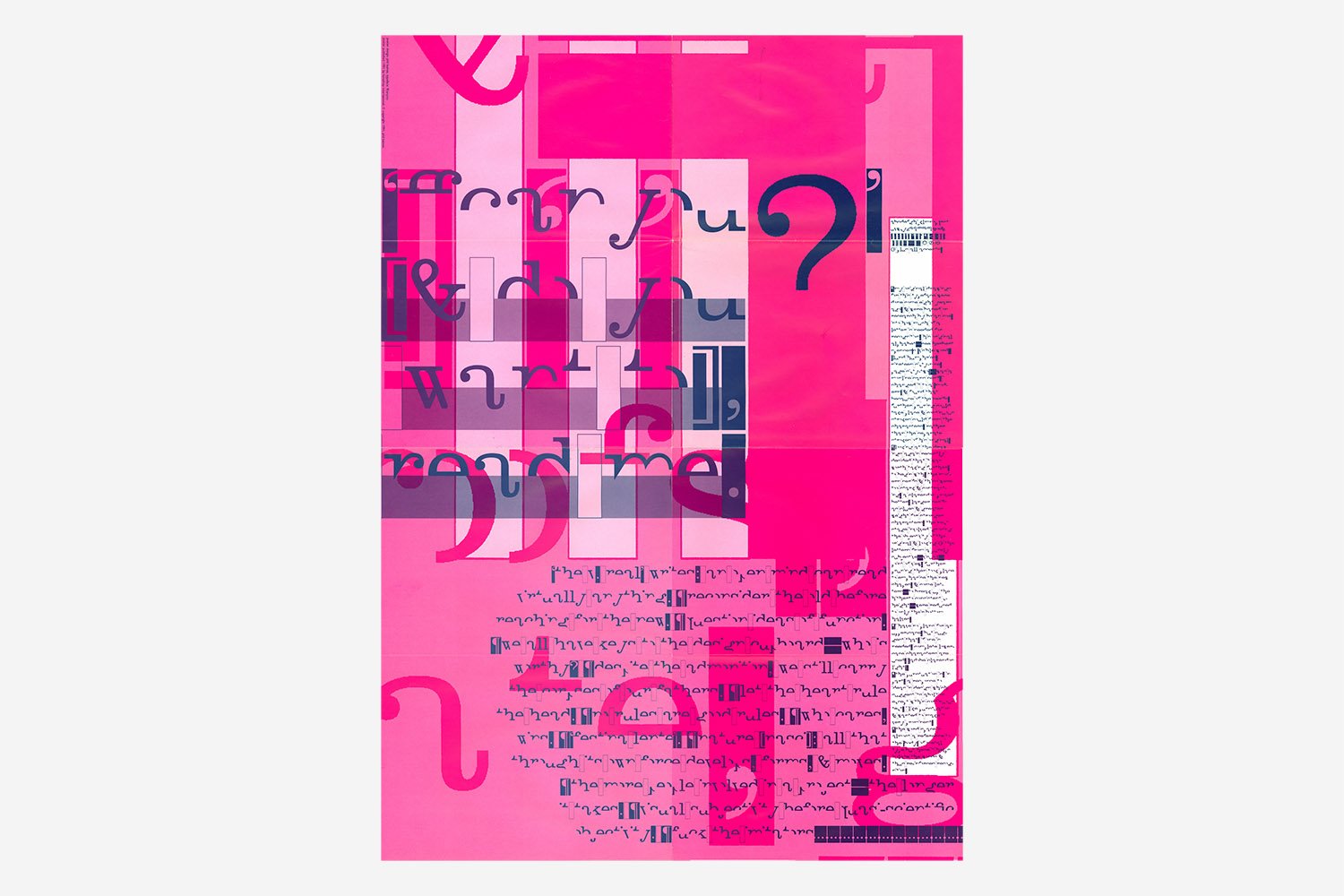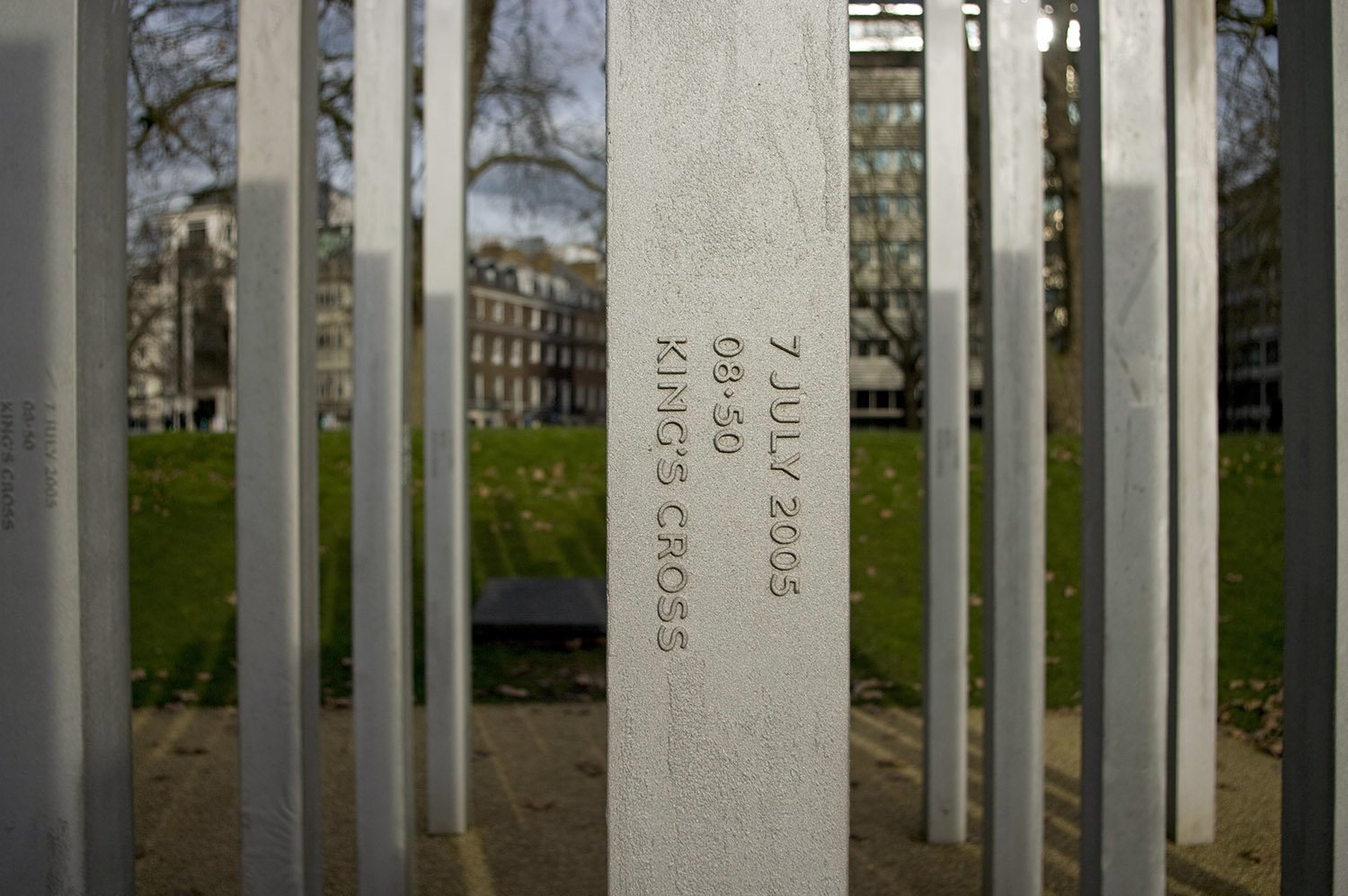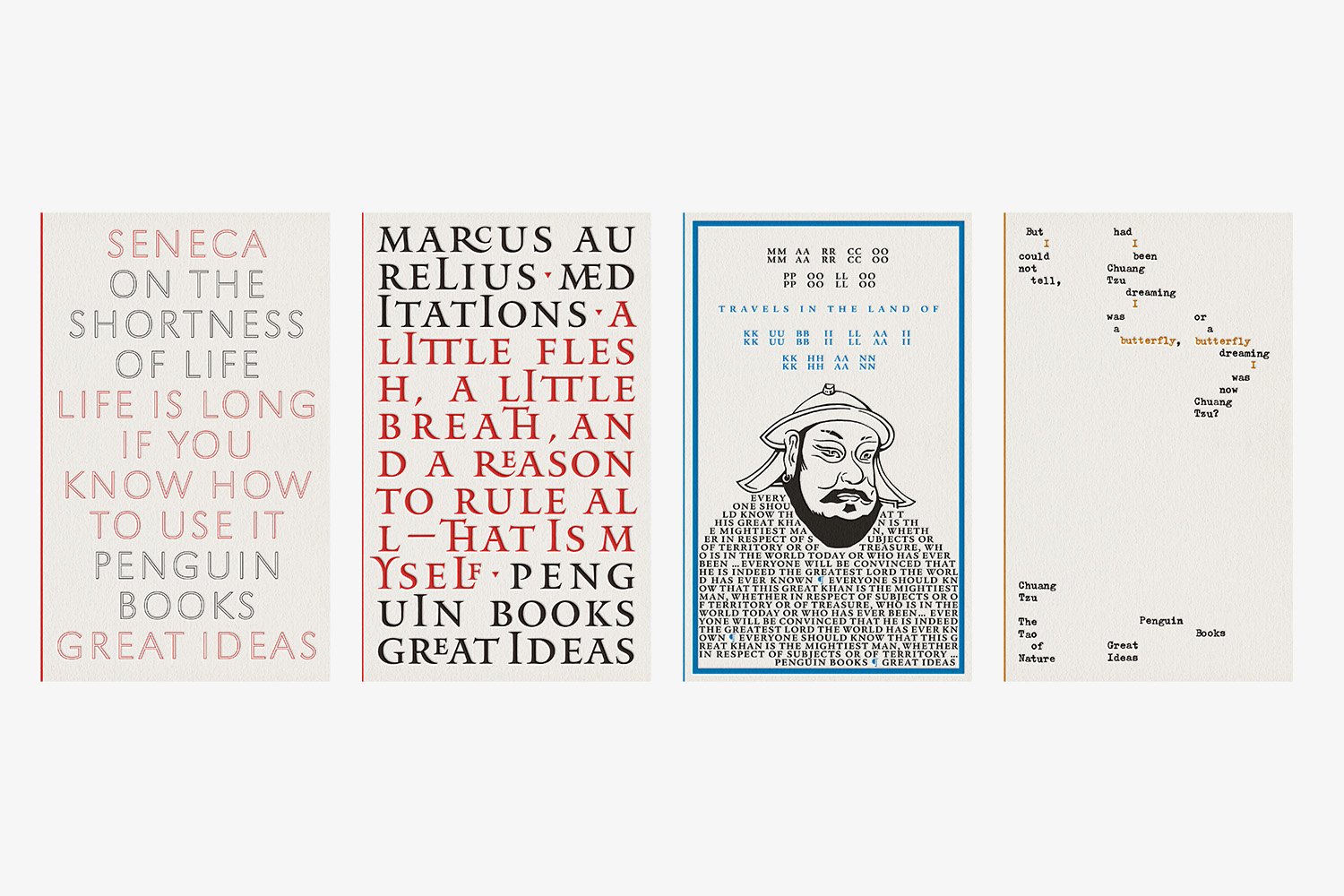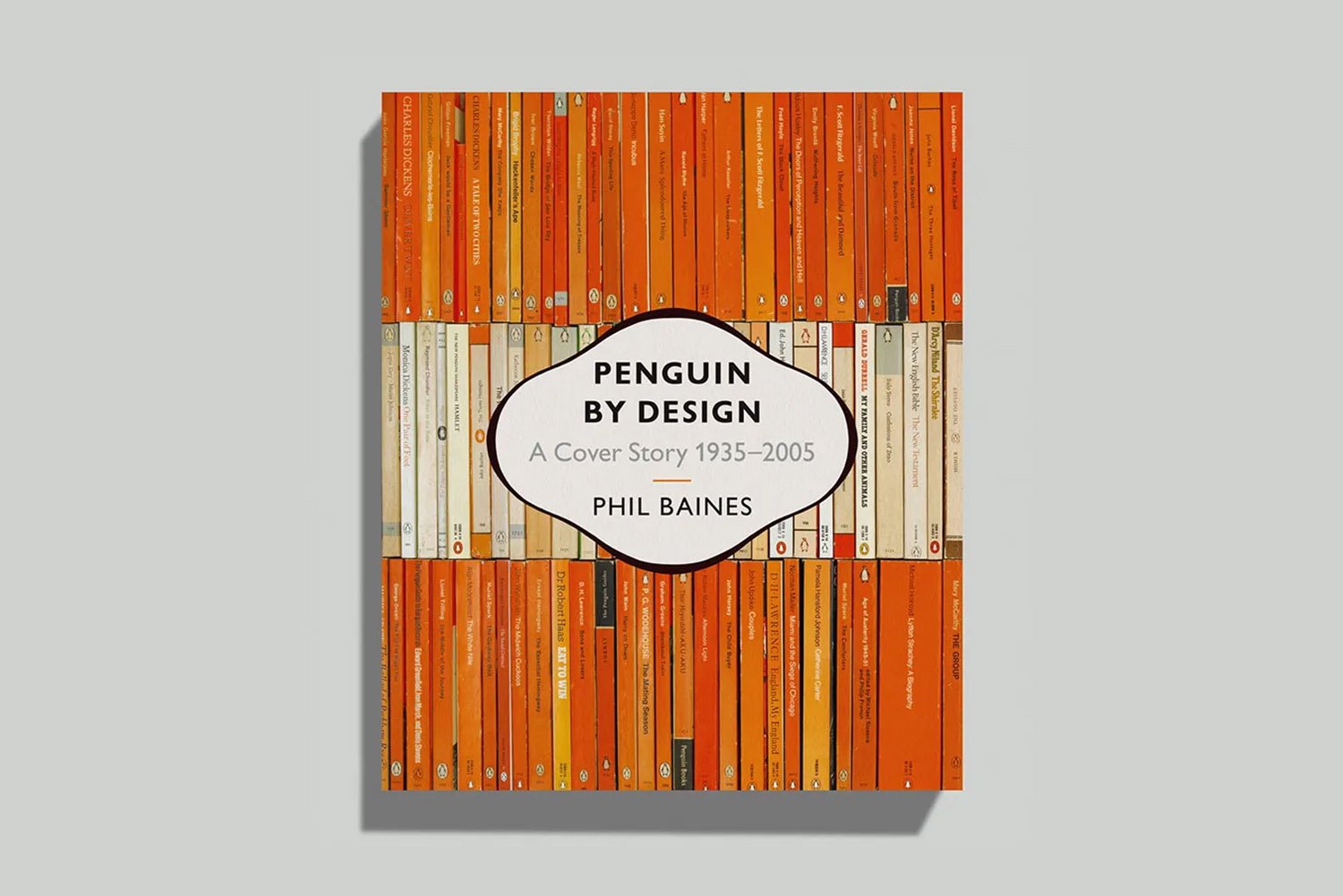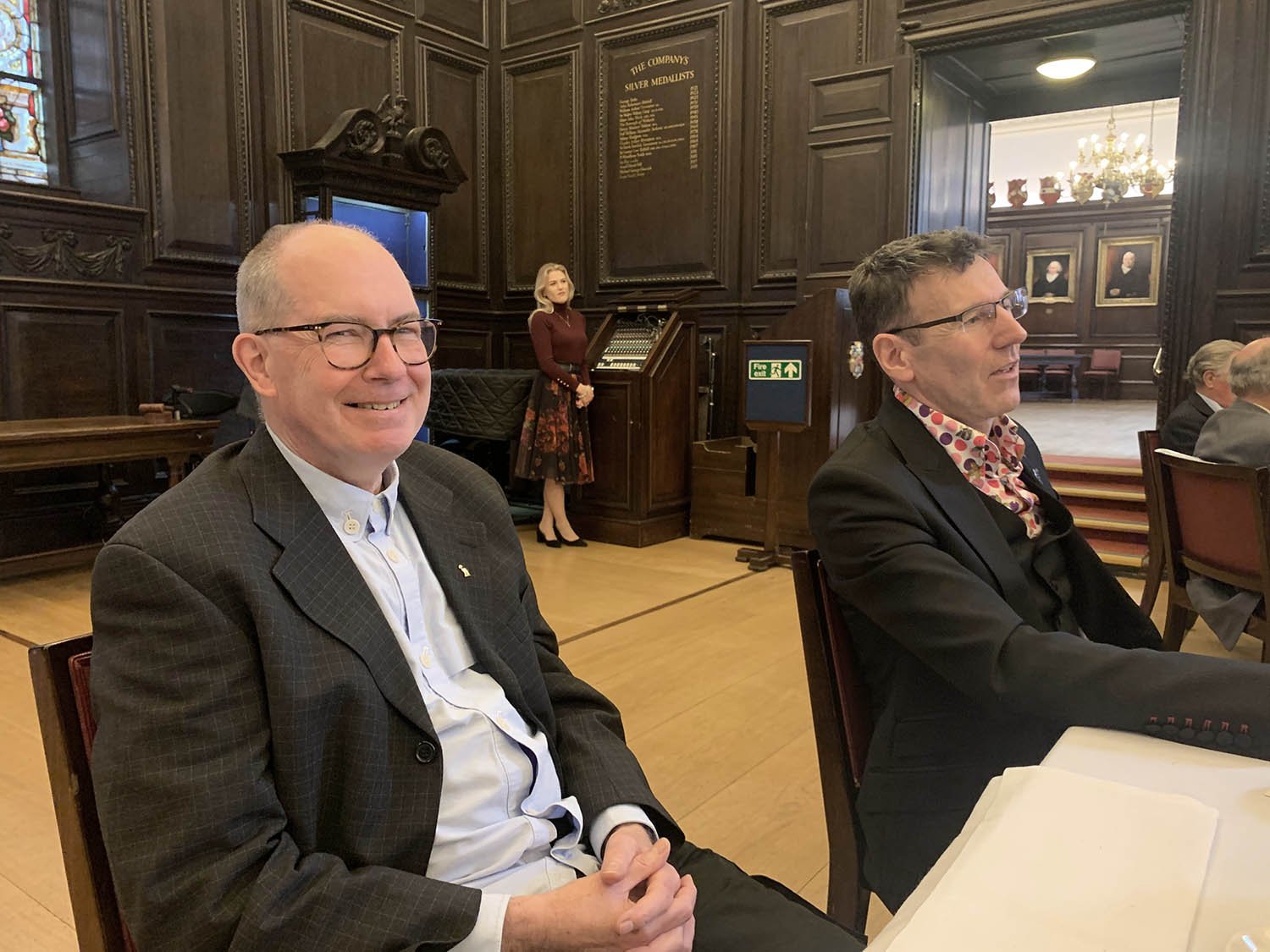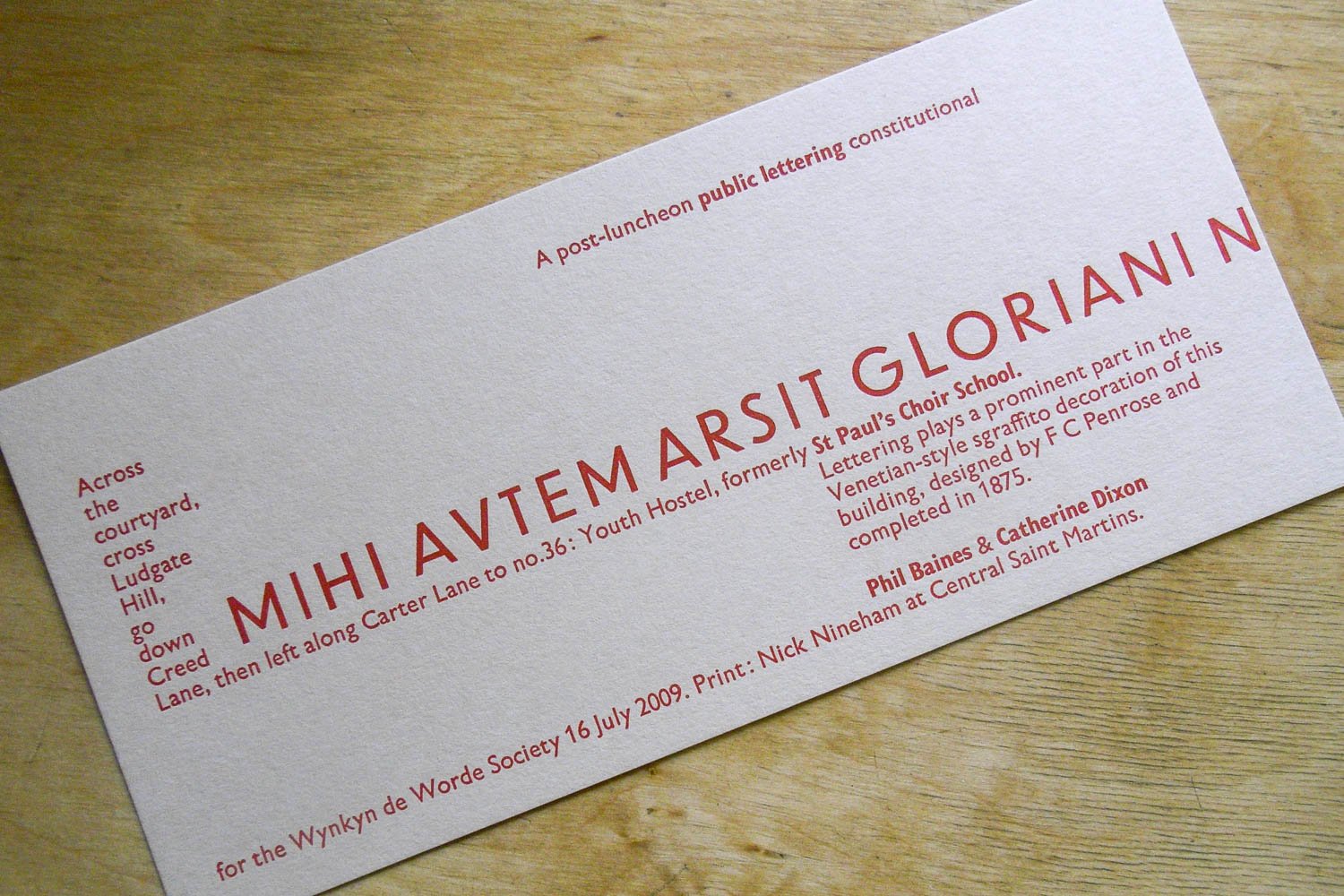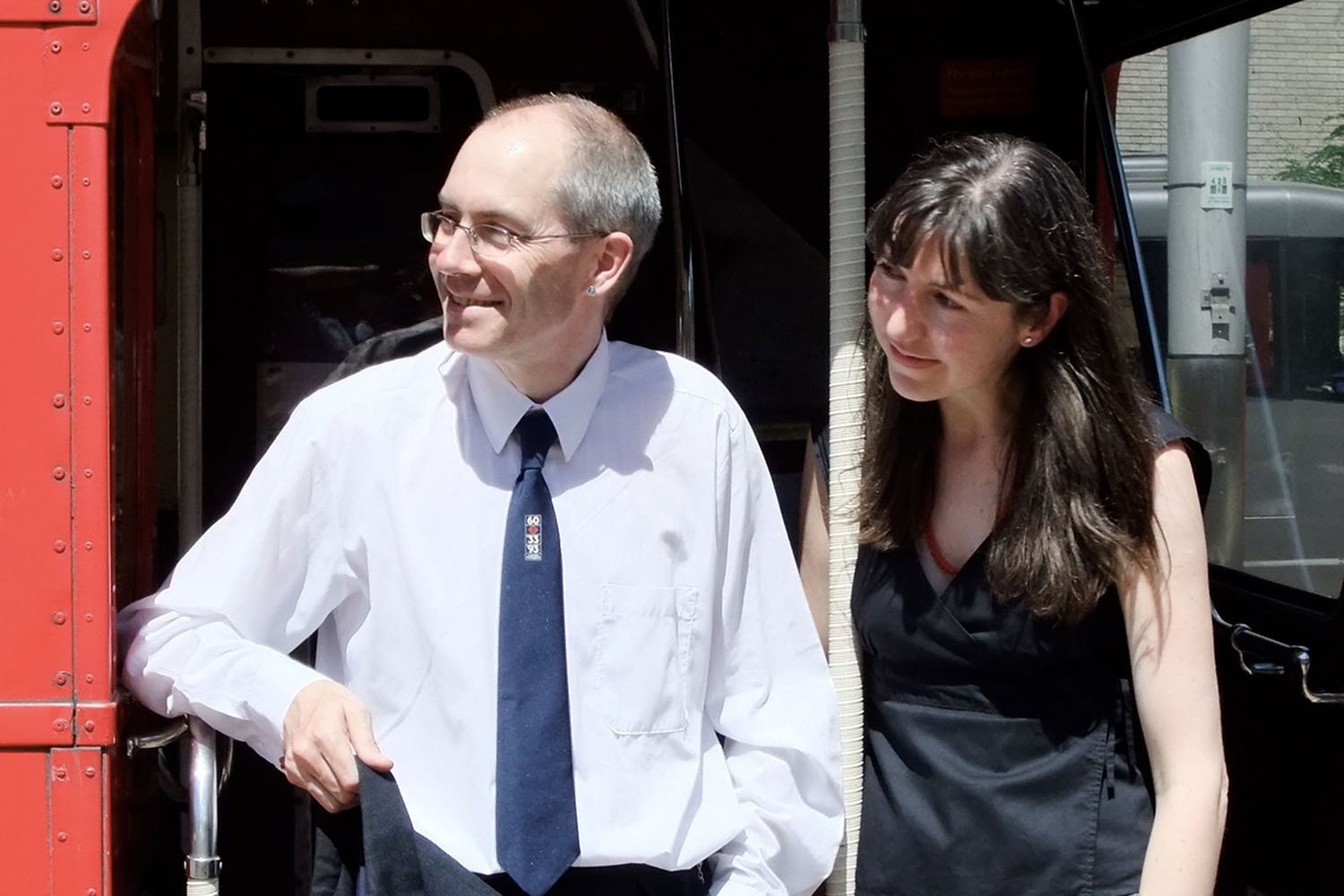In Memoriam – Phil Baines
Phil Baines died at the beginning of the year. His friend, colleague, and fellow member Catherine Dixon, has written about him for us.

As many members of the Society will know, I worked with Phil Baines for many years. Following the sad news of Phil’s death in January I wanted to share a few thoughts on the contribution Phil made to design and education, as well as the Society itself, since he first became a member in 1993.
Born in 1958 in Kendal (then Westmorland) Phil took a circuitous route to art college, studying at Ushaw College in Durham for the Roman Catholic priesthood before switching to graphic design. From 1982 to 1985 he studied at St Martin’s School of Art (before its amalgamation with the Central School of Art & Design). After graduating with an MA from the Royal College of Art in 1987 Phil started his own graphic design business, working for many years from a self-built studio, either alone or with one of a series of assistant designers. In November 2023 Central Saint Martins hosted an acclaimed retrospective Extol: Phil Baines celebrating letters which served to refocus attention on the influence of his practice.
Yet, even thirty years ago, when first nominated for membership of the Society, Phil had already established a significant reputation for a distinctive approach to design. Experimental projects such as his BA thesis, which he typeset entirely using letterpress and his poster for the first Fuse project had been celebrated in the design press and in the ground-breaking book Typography now, an early anthology of the work of a new generation of designers keen to explore the expressive potential of typography.
Known for his typography, Phil avoided describing himself as a typographer. He felt that it was too isolationist in focusing only on the design of text when the relationship of the text to everything else was just as important. It was this understanding of how typography worked in context that enabled him to work across the diverse range of projects he did, including books for leading publishers, posters and art catalogues for cultural institutions, identity and wayfinding systems including for Ditchling Museum of Art + Craft, as well as typefaces, and lettering for three permanent London monuments.
To each of these different design spaces Phil brought a combination of historical understanding, material insight and an exploratory process that remained anchored on language and the expressive potential of the form of words themselves. The outcomes could be restrained and resonant, as in the inscriptions for the 7 July 2005 Memorials in Hyde Park and Tavistock Square or the Tsunami memorial, all developed in collaboration with architects Carmody Groarke.
Or they might be joyful, as with so many of his book covers for the Penguin ‘Great Ideas’ series.
Though his work found its fullest expression in his self-initiated and often self-authored works where he had the greatest freedom to experiment.
Throughout his career Phil balanced running his own studio with a lecturing position at Central Saint Martins, where he was awarded a professorship in 2006. His passion for typography was infectious in a way that opened out the field for students. Known for his red pen and exacting attention to detail, he was much loved for his attention to people, always respectful of students as owners of their own creative vision for their work.
His passion for sharing knowledge extended beyond the classroom too. He wrote books that added to our understanding of visual communication, including Type & typography (with Andrew Haslam), Signs: lettering in the environment (with Catherine Dixon), Penguin by design: a cover story 1935-2005 and Puffin by design: 70 years of imagination 1940–2010. In 2016, he was appointed to the Royal Mint Advisory Committee on the Design of Coins, Medals, Seals and Decorations.
As former Chair of the Society and friend Jeremy Tankard observed when talking about Phil’s enthusiasm for engaging with history and, through that, with community: ‘I don’t think that Phil’s passion for the importance of history in all things can be overestimated. There’s a rightness to community and the part that we each play in the lives of others. Of course, he got involved.’
In terms of Wynkyn de Worde Phil’s involvement took the form of contributions to the design evolution of de Worde, a considerable publication as originated by his friend and early collaborator, the publisher Gordon Rookledge. Phil also spoke at various Society events. On many occasions we shared this privilege. In July 2009 we led a post-luncheon public lettering walk and the following year guided Society members across London on a Public Lettering Routemaster Tour at the kind invitation of then Chair James Alexander.
Phil took early retirement from CSM in 2020 following a diagnosis of Ataxia which was later qualified as Multiple System Atrophy (MSA). Given the rapidity with which his world was physically becoming smaller, it is an immense relief that the Extol show happened when it did. He had the opportunity before he died to recognise for himself the scope of his achievement and to know just how much he was loved and by so many.
A recent tribute evening hosted by CSM only amplified that sense of affection. His reach through his studio work, as well as his teaching and writing, was huge. He touched so very many design lives and the sense of collective loss throughout international design and lettering communities is profound.
He is survived by his wife Jackie, and their two daughters Beth and Felicity.
Phil is featured on the BBC Radio 4 show Last Word from 2/2/2024.

